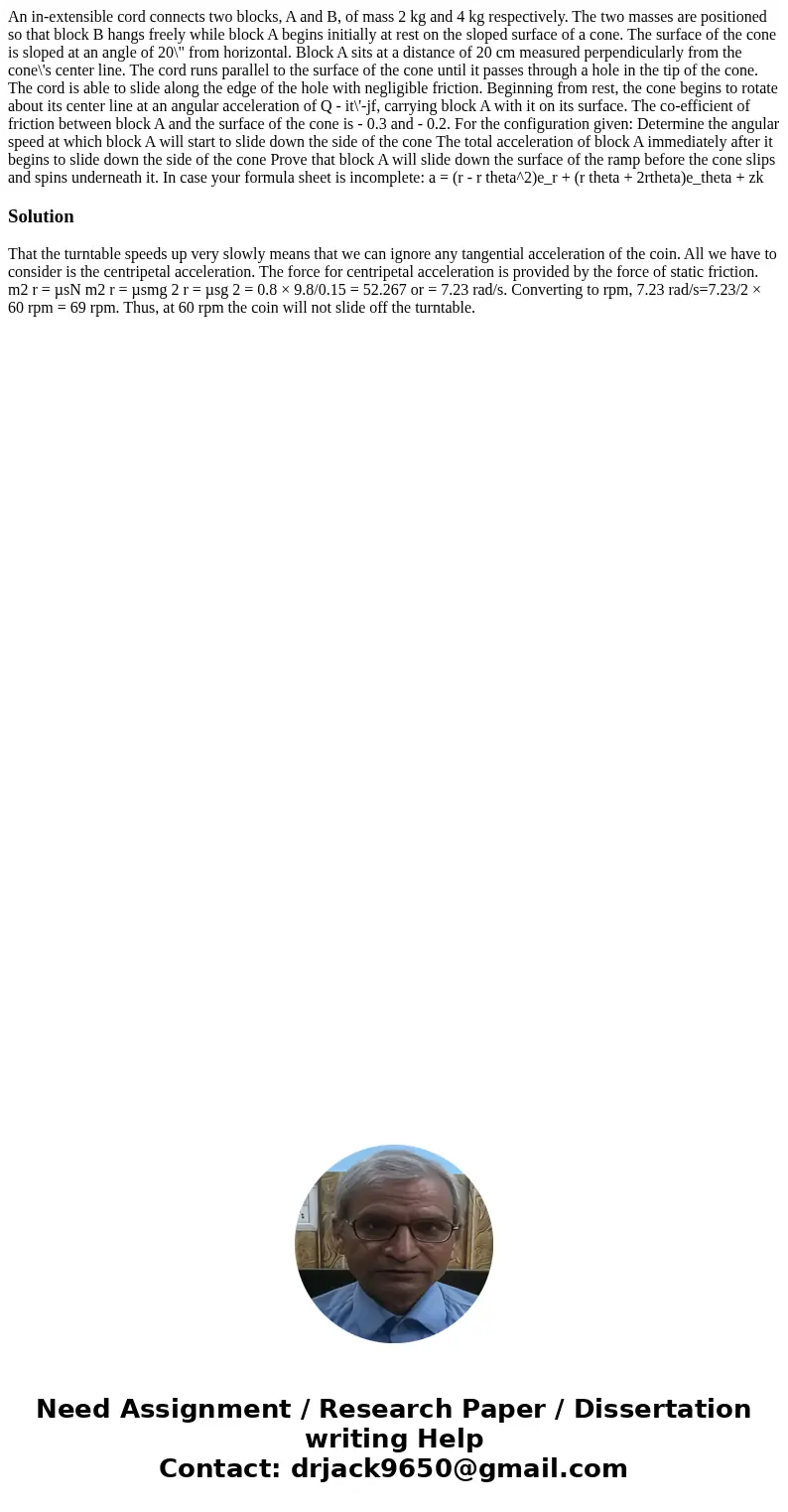An inextensible cord connects two blocks A and B of mass 2 k
An in-extensible cord connects two blocks, A and B, of mass 2 kg and 4 kg respectively. The two masses are positioned so that block B hangs freely while block A begins initially at rest on the sloped surface of a cone. The surface of the cone is sloped at an angle of 20\" from horizontal. Block A sits at a distance of 20 cm measured perpendicularly from the cone\'s center line. The cord runs parallel to the surface of the cone until it passes through a hole in the tip of the cone. The cord is able to slide along the edge of the hole with negligible friction. Beginning from rest, the cone begins to rotate about its center line at an angular acceleration of Q - it\'-jf, carrying block A with it on its surface. The co-efficient of friction between block A and the surface of the cone is - 0.3 and - 0.2. For the configuration given: Determine the angular speed at which block A will start to slide down the side of the cone The total acceleration of block A immediately after it begins to slide down the side of the cone Prove that block A will slide down the surface of the ramp before the cone slips and spins underneath it. In case your formula sheet is incomplete: a = (r - r theta^2)e_r + (r theta + 2rtheta)e_theta + zk 
Solution
That the turntable speeds up very slowly means that we can ignore any tangential acceleration of the coin. All we have to consider is the centripetal acceleration. The force for centripetal acceleration is provided by the force of static friction. m2 r = µsN m2 r = µsmg 2 r = µsg 2 = 0.8 × 9.8/0.15 = 52.267 or = 7.23 rad/s. Converting to rpm, 7.23 rad/s=7.23/2 × 60 rpm = 69 rpm. Thus, at 60 rpm the coin will not slide off the turntable.

 Homework Sourse
Homework Sourse